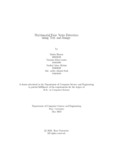| dc.contributor.advisor | Sadeque,Farig Yousuf | |
| dc.contributor.author | Biswas, Trisha | |
| dc.contributor.author | Lamia, Tasmim Afroj | |
| dc.contributor.author | Shykat, Tarikul Islam | |
| dc.contributor.author | Rafi, Md. Arifin Ahmed | |
| dc.date.accessioned | 2024-04-23T05:29:03Z | |
| dc.date.available | 2024-04-23T05:29:03Z | |
| dc.date.copyright | ©2023 | |
| dc.date.issued | 2023-05 | |
| dc.identifier.other | ID: 20101628 | |
| dc.identifier.other | ID: 19301190 | |
| dc.identifier.other | ID: 19301008 | |
| dc.identifier.other | ID: 19301009 | |
| dc.identifier.uri | http://hdl.handle.net/10361/22652 | |
| dc.description | This thesis is submitted in partial fulfillment of the requirements for the degree of Bachelor of Science in Computer Science and Engineering, 2023. | en_US |
| dc.description | Cataloged from PDF version of thesis. | |
| dc.description | Includes bibliographical references (pages 58-59). | |
| dc.description.abstract | Development in information and technology has made the communication easier
in the recent decades. Easy access of social media is creating restraints amid of
differentiating fake and real news. In the recent period the problem has increased
drastically and use of image is making the news more impactful. Even though news
websites are publishing the news and provide the source of authentication still there
are other portals and platform which intentionally spread fake news to exploit an
event. In this paper we proposed a hybrid system where we are combining CNN
and RNN to detect fake news . We applied two techniques to reduce the model
complexity and increase accuracy based on text data and image. With this system,
detecting fake news it’ll stop misleading people and creating an unstable situation
as well as taking benefits of the situation. | en_US |
| dc.description.statementofresponsibility | Trisha Biswas | |
| dc.description.statementofresponsibility | Tasmim Afroj Lamia | |
| dc.description.statementofresponsibility | Tarikul Islam Shykat | |
| dc.description.statementofresponsibility | Md. Arifin Ahmed Rafi | |
| dc.format.extent | 69 pages | |
| dc.language.iso | en | en_US |
| dc.publisher | Brac University | en_US |
| dc.rights | Brac University theses are protected by copyright. They may be viewed from this source for any purpose, but reproduction or distribution in any format is prohibited without written permission. | |
| dc.subject | Natural language processing | en_US |
| dc.subject | Multinomial naive bayes | en_US |
| dc.subject | BERT | en_US |
| dc.subject | Bi-GRU | en_US |
| dc.subject | Bi-LSTM | en_US |
| dc.subject | Word embedding | en_US |
| dc.subject | Fake news | en_US |
| dc.subject | Support vector machine | en_US |
| dc.subject.lcsh | Deep learning (Machine learning) | |
| dc.subject.lcsh | Fake news--Prevention--Data processing. | |
| dc.title | Multimodal fake news detection using text and image | en_US |
| dc.type | Thesis | en_US |
| dc.contributor.department | Department of Computer Science and Engineering, Brac University | |
| dc.description.degree | B.Sc. in Computer Science | |

